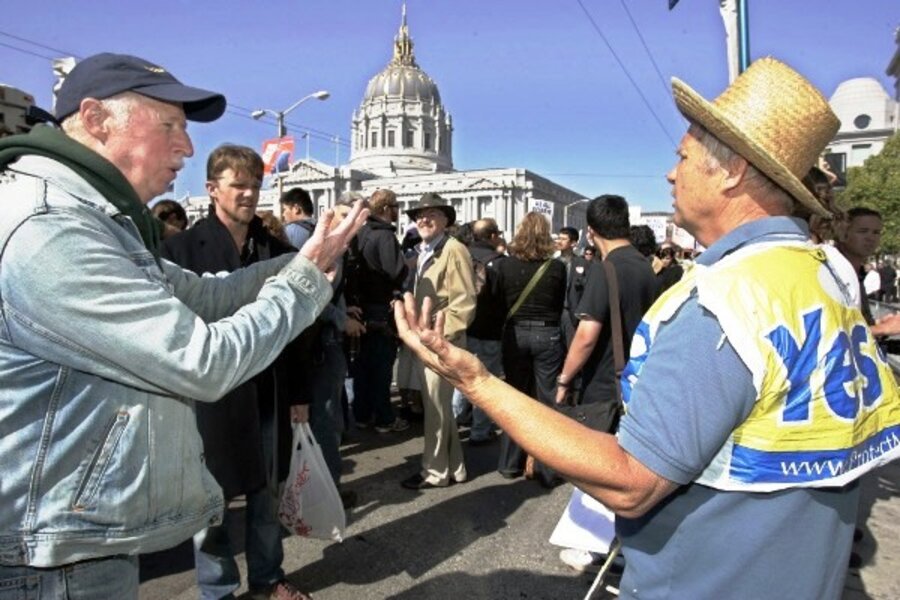California judge to put landmark gay marriage case on YouTube
Loading...
| San Francisco
The federal case that challenges California’s gay marriage ban will be videotaped and shown on YouTube, a judge ruled Wednesday.
The decision marks a first for a Western district federal court and also highlights the intense interest in this case, which advocates on both sides of the issue say could eventually be heard in the US Supreme Court and amount to a landmark ruling on gay marriage.
“This certainly is a case that has sparked widespread interest,” US District Court Judge Vaughn Walker said of the latest legal challenge to Proposition 8, the voter approved initiative that outlawed same sex marriage in 2008.
Two unmarried same-sex couples are seeking to overturn the ban on grounds that it violates their rights to equal protection under the Constitution. Two high-profile attorneys who argued on opposite sides of the Bush v. Gore case in 2000 – Theodore Olson and David Boies – are representing the couples.
Cameras in the courtroom – in whose favor?
Lawyers arguing in favor of Prop. 8 opposed cameras in the courtroom. They said it could lead to witness harassment and intimidate others from testifying in favor of the gay marriage ban.
But same-sex marriage proponents and members of the media said nationwide interest in the case – and its potential for setting legal precedent – merited cameras in the courtroom.
“This case presents issues that are very important to the public, and will affect millions of people. However, only a tiny fraction will ever be able to watch the trial in person,” wrote the Courage Campaign, a California group that advocates for progressive causes, in a letter to Judge Walker.
A new experiment
The case, which is set to begin Monday, will not be broadcast live. It will instead be shown on a delayed basis via YouTube. A live feed will be shown in satellite courtrooms.
The 9th Circuit Court of Appeals approved the use of video cameras in civil, non-jury hearings on an experimental basis in December.
“We hope that being able to see and hear what transpires in the courtroom will lead to a better public understanding of our judicial processes and enhanced confidence in the rule of law,” said Chief Judge Alex Kozinski. “The experiment is designed to help us find the right balance between the public’s right to access to the courts and the parties’ right to a fair and dignified proceeding.”
-----
Follow us on Twitter.





